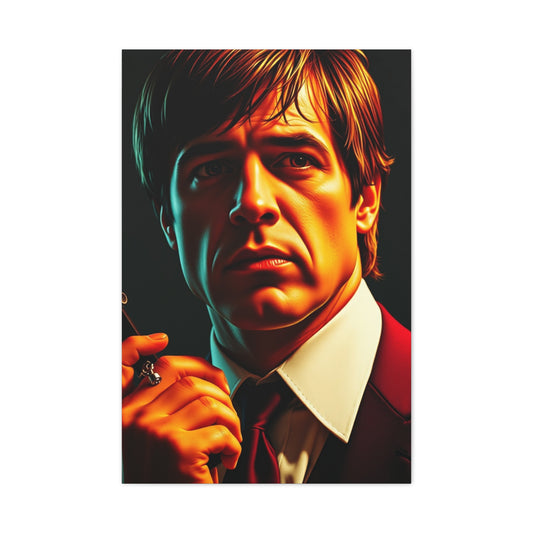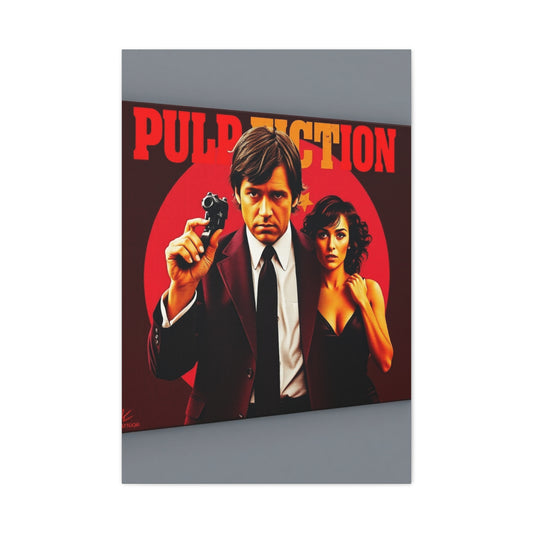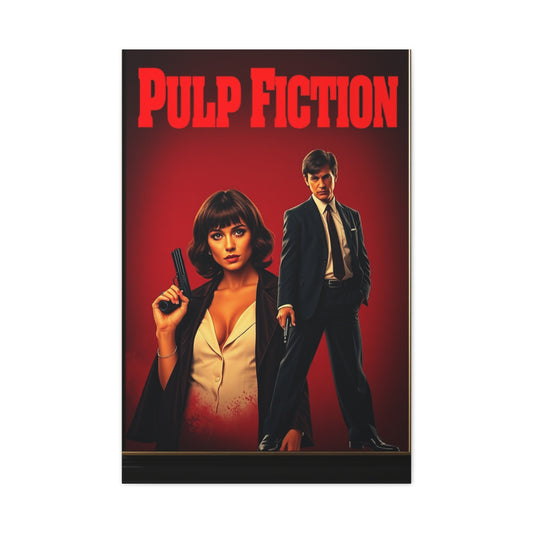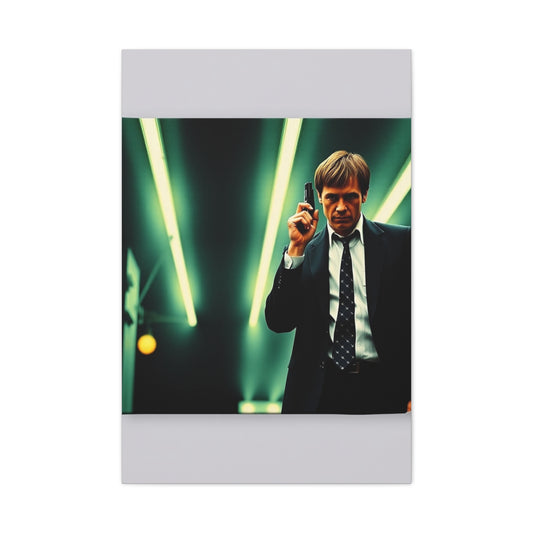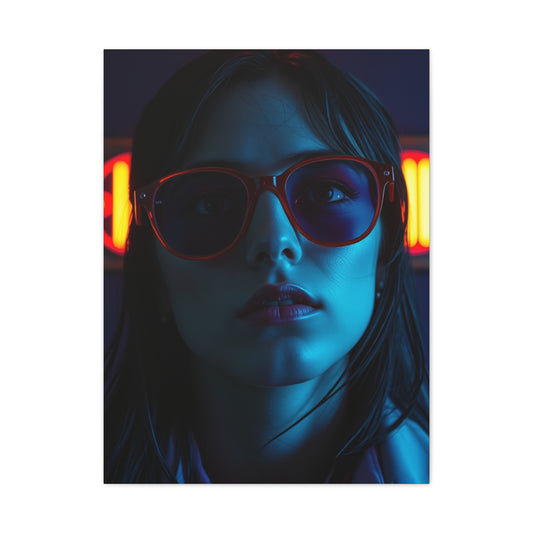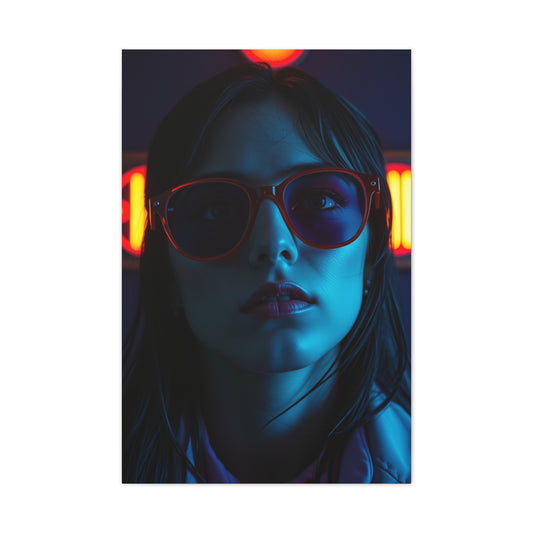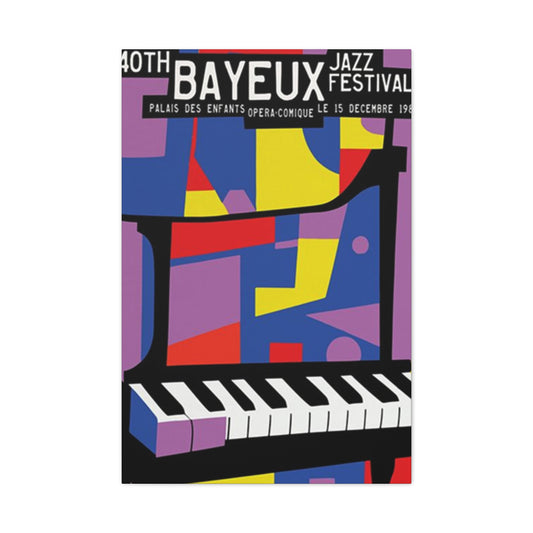Long exposure night photography is one of the most captivating styles of photography, where the slow passage of time is captured in a single frame. The shimmering lights of a city, the flowing motion of traffic, and the soft glow of street lamps all lend themselves to mesmerizing images that reveal the beauty of the urban landscape after dark. However, capturing such images isn't always as straightforward as it seems, especially for beginners. There are several important techniques and tips to ensure your long exposure cityscapes are sharp, dynamic, and visually striking. Whether you're aiming for stunning light trails or want to capture the movement of clouds or stars over a city skyline, this guide will provide the information and strategies you need to get the best results from your camera.
Preparing for Long Exposure Shots
The first step in capturing a mesmerizing long exposure cityscape is selecting the right location. Find a vantage point that offers a clear and interesting view of the city, complete with sufficient light sources such as street lamps, traffic, or architectural highlights. A location with varying light intensities across the scene, such as a busy intersection or a skyline lit by streetlights, will add depth and contrast to your photograph. A higher vantage point, such as a rooftop or a hill, often provides the best views of sprawling cityscapes.
Once you've found your location, it's time to set up your camera. Place your camera on a sturdy tripod to ensure stability. This is essential for long exposure photography since the camera's shutter will be open for an extended period, and even slight movements can introduce blur. A tripod provides a solid foundation that will eliminate any unwanted motion, ensuring a sharp and clean image.
|
Related Catagories: |
Essential Gear for Long Exposure Photography
Long exposure photography, especially at night, is a rewarding and creative way to capture the world around you in ways that aren’t visible to the naked eye. The ethereal glow of city lights, star trails in the sky, and light trails from moving cars can transform an ordinary scene into something magical. However, capturing stunning long exposure shots, particularly in low-light conditions, requires having the right gear. While you don’t need an extensive amount of equipment to get started, investing in the proper tools will make a significant difference in the quality of your photographs.
Below is an overview of the essential gear you need for successful long exposure night photography, from lenses to stabilizing accessories and remote controls. With these tools, you can take your photography to the next level, ensuring you achieve sharp, vibrant images with minimal effort.
Fast Lens for Low-Light Performance
When shooting at night, one of the most crucial pieces of equipment you’ll need is a fast lens. A lens with a wide aperture (typically between f/1.2 and f/1.8) allows more light to enter the camera, which is essential for night photography. A wide aperture not only helps you achieve proper exposure without using excessively long shutter speeds but also helps to create a more vivid and dynamic image, even in dimly lit settings.
A fast lens lets you shoot at faster shutter speeds while maintaining exposure balance, which is especially important when you’re shooting moving objects, like traffic, people, or clouds. Without the right lens, you'll find yourself relying on slower shutter speeds to gather enough light, which may result in motion blur or overly noisy images. The beauty of using a lens with a wide aperture is that it provides an opportunity to photograph scenes in lower light conditions, allowing you to keep the exposure time short while still capturing all the details in the scene.
Another benefit of using a fast lens is that it provides a shallower depth of field. This allows you to separate the subject from the background, creating beautiful bokeh effects that emphasize the subject and add a professional look to your photos. This is particularly useful in cityscape photography, where you can blur the bright lights in the background while keeping the foreground details sharp. Whether you're capturing a city skyline, a monument, or light trails from moving vehicles, the right lens makes all the difference.
Tripod for Stability and Precision
A tripod is one of the most critical pieces of equipment in long exposure photography. Since the camera's shutter will be open for an extended period, even the slightest camera shake can result in unwanted blur, ruining the shot. A tripod ensures that your camera stays perfectly still throughout the exposure, allowing the sensor to capture the full range of light without any disturbances.
The stability provided by a tripod is essential for obtaining sharp and crisp photos. For long exposure shots, especially when photographing cityscapes or night skies, you may be dealing with exposures lasting several seconds or even minutes. Without a tripod, you would need to use very high shutter speeds, which may not allow enough light to enter the camera, resulting in dark and underexposed images. The tripod also allows you to frame your shot with precision, without worrying about inadvertently moving the camera while setting up the composition.
When choosing a tripod for long exposure photography, consider factors such as weight, stability, and height. A tripod that is too light or flimsy may not offer the necessary support, especially when shooting in windy conditions. On the other hand, a tripod that is too heavy may become cumbersome to carry, especially if you're shooting outdoors or need to move to different locations quickly. A balance between portability and stability is key for optimal performance.
Moreover, consider getting a tripod with adjustable legs and a center column, as this allows you to adjust the height and positioning of the camera to suit different shooting angles. This flexibility is particularly useful when shooting at night, where you may want to experiment with various perspectives to capture the perfect cityscape or night sky shot.
Remote Trigger for Vibration-Free Shots
While a tripod keeps your camera steady, pressing the shutter button manually can still introduce slight vibrations that cause image blur. Even the most stable tripod setup can suffer from camera shake when you touch the camera, especially during long exposure shots. To eliminate this risk, using a remote shutter release or wireless remote trigger is a simple yet highly effective solution.
A remote trigger allows you to capture images without physically touching the camera, ensuring no vibrations are introduced into the shot. This is especially important when shooting long exposure photos, as the camera’s shutter will remain open for extended periods, making it more sensitive to any motion. A wireless remote trigger allows you to control the camera from a distance, providing more flexibility and precision in your shots.
Remote triggers typically come in two forms: wired and wireless. Wired remotes connect directly to your camera, while wireless remotes communicate with your camera via infrared or Bluetooth. Wireless triggers are particularly beneficial because they offer more freedom of movement, allowing you to operate the camera from up to 80 meters away in some cases. This is useful when you're trying to photograph a large scene or are in a position where physically pressing the shutter might disturb your setup.
Many remote triggers also come with features such as timer settings, which are ideal for taking self-portraits or capturing time-lapse sequences. Some models even include bulb mode, allowing you to take ultra-long exposures without worrying about the shutter time limit on your camera.
Timing Your Shots
Timing plays a vital role in achieving the desired atmosphere in your photos. If you’re looking for a dramatic shot that includes the warm glow of the setting sun or the soft hues of twilight, be sure to arrive at your location at least 45 minutes before the sun rises or sets. The light during these times changes rapidly, so arriving early allows you to set up your camera and compose your shot while the light shifts.
When shooting cityscapes at night, you’ll have a broader window of time to capture your images. After the sun sets, you typically have 8 to 10 hours of darkness to experiment with different exposure times. However, even after the sun disappears, your camera may still pick up faint light from the horizon, so consider waiting an extra few minutes to allow for proper adjustment. While the sky may appear to be pitch-black to the naked eye, the camera sensor can still gather light from residual daylight, affecting the exposure.
Optimizing Camera Settings for Night Photography
Night photography, particularly when capturing long exposure cityscapes, offers a creative opportunity to explore the beauty of urban life in a way that daylight shots can't replicate. The shimmering lights, the movement of traffic, and the contrast between illuminated buildings and dark skies create dramatic compositions. However, getting the best results in low-light conditions requires precise camera settings to ensure clarity, vibrancy, and an effective capture of the scene. In this guide, we will explore key settings and techniques to optimize your camera for stunning night cityscape photography.
Shoot with High ISO
One of the most crucial camera settings for night photography is ISO, as it controls the sensitivity of your camera's sensor to light. The lower the ISO, the less sensitive the sensor is to light, which is ideal for daylight conditions but insufficient for long exposure shots at night. When shooting cityscapes at night, you need to ensure that your camera can gather enough light to create a clear, well-exposed image. This is especially important when you're aiming to capture moving elements, like traffic, or when you're shooting in areas with limited ambient light.
For most cameras, the ideal ISO range for low-light or long exposure photography falls between 800 and 3200. This range provides a good balance between light sensitivity and noise control. Noise, also known as grain, is a common issue when using high ISO settings. As you increase the ISO to higher values, the amount of noise in the image increases, which can degrade image quality. However, when shooting cityscapes, slight noise can sometimes be acceptable, especially in areas of the photo with high detail, such as buildings or light trails. Therefore, finding the right ISO for your camera is essential.
Using a higher ISO value, such as 3200 or 6400, is beneficial when you want to reduce your exposure time or need to capture scenes in areas that are not as well lit. However, the trade-off is that the higher the ISO, the more noise you will see in your final images. Conversely, using a lower ISO, like 800 or 1600, will give you cleaner images with less noise but may require you to extend your exposure time. It’s essential to experiment with ISO values and find the sweet spot for your camera, ensuring you get the right amount of light sensitivity without introducing too much grain into the image.
While ISO 100 is perfect for daylight photography, at night, it simply doesn't allow enough light into the sensor. Using ISO 100 during long exposure shots in the dark could result in underexposed images or excessively long shutter speeds. For clear, balanced shots, raise your ISO to ensure your camera gathers enough light to produce vibrant cityscape photos.
Use Live View to Focus
Achieving proper focus in low-light environments can be challenging, as the camera's autofocus system may struggle to lock onto a subject when the light is insufficient. In situations where traditional autofocus might fail, Live View can be your best friend. Live View allows you to use the LCD screen on your camera to preview the image in real-time, making it easier to focus accurately in dark environments.
When you activate Live View, your camera will brighten the image on the LCD screen, providing a clearer view of the scene. This feature is especially helpful for focusing on specific points of light in the city, such as streetlights, illuminated signs, or headlights of cars. These light sources provide the necessary contrast for precise focusing, making them ideal targets.
To focus effectively at night, start by selecting a bright light source within your frame. Zoom in on the image displayed on the LCD screen (using the digital zoom feature on your camera) to get a closer view of the light source. Adjust the focus manually until the light becomes sharp and well-defined on the screen. Once you've achieved focus on your primary subject, switch your lens to manual focus mode. This ensures that the focus remains locked throughout the long exposure shot without any unintended shifts.
After you’ve locked focus, you can then adjust other settings, such as aperture and ISO, to fine-tune your exposure. Keep in mind that at night, your camera might still have difficulty focusing on dark or low-contrast areas. This is why focusing on a bright point of light is crucial to ensure your subject is sharp and in focus.
|
Related Catagories: |
Compose Your Frame
Composition is one of the most important aspects of photography, whether you're shooting landscapes, portraits, or cityscapes. When shooting at night, good composition can make a significant difference in the impact and mood of your final image. In night photography, the arrangement of light sources, buildings, and other elements in the scene is critical to creating a balanced and dynamic photograph.
One of the simplest yet most effective compositional techniques is the Rule of Thirds. This rule divides your frame into a 3x3 grid, creating nine equal sections using two horizontal and two vertical lines. The idea behind this rule is to place key elements of your composition along these lines or at the intersections, creating a more visually appealing and balanced image.
For cityscapes, consider placing the main focal point—such as a prominent building, a landmark, or an illuminated bridge—at one of these intersections. This helps draw the viewer’s eye to the most important part of the image while maintaining an overall sense of balance. Additionally, you can position elements like light trails, reflections, or roads that lead into the city to guide the viewer’s gaze through the frame, enhancing the depth and flow of the scene.
Night cityscapes often involve intricate layers of light, shadows, and reflections. As you compose your shot, think about how to emphasize the contrasts between illuminated buildings and dark streets, or the way car lights can streak through the scene. You can use the Rule of Thirds not only for key elements of the city but also for negative space, ensuring that empty areas balance the scene and don’t overwhelm the subject matter.
When shooting cityscapes, try to avoid placing the horizon directly in the middle of the frame. Instead, position it along the top or bottom third of the image, depending on whether you want to emphasize the city skyline or the street-level details. This technique makes your photo feel more dynamic and visually interesting, especially when combined with other elements of the scene.
Additional Camera Settings and Tips for Night Photography
In addition to the core settings mentioned above, several other camera settings and techniques will help you capture more striking long exposure cityscapes:
Aperture: At night, using a wide aperture (like f/1.8 or f/2.8) allows more light to reach the camera’s sensor, which is essential for capturing a bright, clear image. A wider aperture also gives you the ability to isolate subjects, creating a pleasing depth of field that helps emphasize key elements of your composition.
Shutter Speed: Shutter speed is another crucial factor in long exposure photography. For cityscapes, shutter speeds typically range from a few seconds to several minutes, depending on how much light you want to capture. For example, when photographing light trails from moving cars, you'll want a longer exposure (such as 10-30 seconds) to allow the headlights and taillights to leave streaks. For a static scene without motion, shorter exposures (around 5-10 seconds) may be sufficient to capture sufficient light.
White Balance: Night cityscapes often contain a mixture of light sources, such as streetlights, neon signs, and car headlights, each with different color temperatures. Adjusting your white balance can help balance these colors and create a more cohesive image. Use the camera’s custom white balance setting or experiment with the tungsten (incandescent) setting to warm up the tones, or try using the fluorescent setting to cool down the scene if needed.
RAW Format: Shooting in RAW format is highly recommended for night photography because it captures more data than JPEG files. This allows you to make more adjustments during post-processing, such as correcting exposure, adjusting contrast, and reducing noise, without sacrificing image quality.
Choosing the Right Shooting Mode for Night Photography
When it comes to night photography, especially capturing long exposure cityscapes, selecting the right shooting mode on your camera can significantly enhance your results. Whether you're trying to capture the stunning glow of city lights, the motion of traffic, or the intricate details of a dark, illuminated skyline, your camera's settings play a pivotal role in how well your images turn out. The right shooting mode can simplify the process and help you achieve the desired exposure and effect without much hassle. In this guide, we’ll explore two popular shooting modes—Aperture Priority Mode and Manual Mode—and how to use them effectively in night cityscape photography.
Aperture Priority Mode for Night Photography
Aperture Priority Mode is often a go-to choice for many photographers when shooting cityscapes or landscapes at night. This mode strikes a perfect balance between control and automation, allowing the photographer to focus on the most important aspect of their shot—aperture—while letting the camera handle the shutter speed.
When you're shooting cityscapes at night, the goal is often to gather as much light as possible while keeping the exposure balanced. The aperture, or f-stop, controls the amount of light that enters the camera through the lens. By selecting a wide aperture (such as f/1.8 or f/2.8), you allow more light to hit the sensor, which is particularly important in low-light conditions. A wide aperture will help brighten the scene without requiring excessively long shutter speeds, which can cause motion blur.
In Aperture Priority Mode, the camera automatically adjusts the shutter speed based on the aperture setting you choose. The advantage of this is that you don’t need to manually calculate how long the shutter should remain open—your camera does the work for you. For example, if you set your aperture to its widest setting (f/1.8), your camera will select a slower shutter speed that allows enough light to enter the sensor, giving you a well-exposed image without overexposing the highlights.
This mode is ideal when you want to control the depth of field, which is particularly important in cityscape photography. The shallow depth of field that comes with wide apertures allows you to isolate specific subjects, such as a landmark or building, while softly blurring the background lights, creating a beautiful, dreamy effect. The ability to adjust the aperture while letting the camera manage the exposure time makes Aperture Priority Mode perfect for fast-paced shooting situations, where there’s little time to manually adjust settings for each shot.
Manual Mode and the 300/500 Rule
While Aperture Priority Mode offers a high level of convenience, some photographers prefer Manual Mode, especially when they want complete control over their exposure settings. In Manual Mode, you set both the aperture and shutter speed, allowing you to fully customize how light is captured by the camera. While this gives you more creative flexibility, it can be challenging to find the right exposure settings, particularly when shooting at night with long exposures.
One of the most useful tools for achieving the correct exposure in Manual Mode is the 300/500 Rule, a simple mathematical formula used to calculate the maximum exposure time to avoid star trails and image blur. This rule is especially useful in cityscape and landscape photography, where long exposure times are necessary to capture enough light, but too long an exposure can result in undesirable motion blur, especially in scenes with moving elements like traffic or pedestrians.
To apply the 300/500 Rule, you need to know the focal length of your lens and the type of sensor your camera has (full-frame or crop sensor). The rule helps you calculate the longest shutter speed you can use without causing noticeable image blur. For full-frame cameras, you divide 500 by the focal length of your lens. For example, with a 24mm lens, you would divide 500 by 24, resulting in a maximum exposure time of around 20 seconds. This exposure time ensures that the stars or other light trails in the scene remain sharp, without any trails forming due to the Earth’s rotation.
For crop sensor cameras, the same formula applies, but instead of 500, you use 300. For instance, if you use the same 24mm lens on a crop sensor camera, you would divide 300 by 24, which equals 12 seconds. The crop sensor’s smaller size means the image is cropped, so shorter exposure times are needed to prevent motion blur.
Using the 300/500 Rule ensures you achieve a sharp image while preventing the long, unnatural light trails that can occur with overexposed images. Keep in mind that the formula is designed to keep exposures short enough to avoid star trails but may not apply to every situation. For example, if you're photographing light trails from cars or the motion of clouds, you might intentionally choose a longer exposure time to emphasize the movement.
The Benefits of Manual Mode
While using Aperture Priority Mode can be a quick and efficient way to get a well-exposed shot, Manual Mode offers several advantages for photographers who want more creative control over their long exposure night photography. Here are a few reasons why you might choose Manual Mode:
Full Control Over Exposure: In Manual Mode, you control both the aperture and shutter speed, which means you have complete control over how much light enters the camera and how long the sensor is exposed to that light. This is especially important when you want to fine-tune your exposure, avoid overexposure or underexposure, or capture specific details in the scene.
Better Handling of Varying Light: Cityscapes at night can be challenging because they often have a mixture of bright lights, shadows, and dark areas. Manual Mode allows you to adjust settings to balance the exposure and prevent highlights from becoming too overexposed while maintaining the details in the shadows.
Adaptability to Different Subjects: If you're shooting a static cityscape with no moving elements, Manual Mode gives you the flexibility to adjust the shutter speed to your exact specifications. For example, you can experiment with longer exposures to capture more light or use shorter exposures to freeze motion in the scene, such as in traffic shots.
Creativity with Long Exposure Effects: Manual Mode gives you the freedom to explore creative long exposure techniques, such as light painting or capturing the motion of clouds or people. With the right settings, you can experiment with different exposure times to create unique effects that aren’t possible in other modes.
Fine-Tuning Your Night Photography Settings
Regardless of whether you're using Aperture Priority or Manual Mode, fine-tuning your camera settings is crucial to achieve the best results in night photography. Here are a few tips to consider:
Aperture Settings: Use a wide aperture (such as f/1.8 to f/2.8) to allow more light into the camera, especially in low-light conditions. However, if you're capturing a cityscape with a wide scene, you may want to use a narrower aperture (such as f/5.6 or f/8) to ensure more elements are in focus.
Shutter Speed Adjustments: In Manual Mode, experiment with different shutter speeds to find the right balance between exposure time and motion. A longer exposure will allow for more light, but it can also introduce motion blur from moving elements in the frame. Adjust your shutter speed accordingly to capture the right amount of light while avoiding blur.
ISO Settings: As mentioned earlier, adjusting your ISO is crucial to achieving a clean exposure. Use an ISO value between 800 and 3200 for most cityscapes, but don't be afraid to experiment. Lower ISOs can reduce noise, while higher ISOs may help you capture more light in dark scenes.
Use a Remote Trigger: To avoid introducing camera shake, use a remote shutter release or a self-timer to trigger the shutter without physically touching the camera. This is particularly useful when working with longer exposure times, where even the smallest movement can blur the image.
Bracketing and HDR for Perfect Exposure
Long exposure city photography often involves a mix of bright light and deep shadows, making it difficult to achieve perfect exposure in one shot. Bracketing is a great technique to overcome this challenge. Bracketing involves capturing multiple shots of the same scene with varying exposure settings. Afterward, you can choose the best exposure or combine them to create the perfect image.
HDR (High Dynamic Range) processing is another technique for enhancing cityscape images. HDR combines several images with different exposure levels into one photo to ensure that both highlights and shadows are well-exposed. Use post-processing software like Lightroom to merge bracketed shots into a seamless HDR image, bringing out details in both the bright and dark areas of the photo.
Experimenting with Star Trails
If you're interested in capturing star trails alongside cityscapes, long exposures are your best friend. The longer the exposure time, the more defined the trails will become. For star trail photography, use a lower ISO setting to prevent overexposure and an appropriate aperture to allow enough light. A good strategy is to use a long exposure time—at least 15 to 20 minutes or more—depending on how much of the star’s motion you wish to capture. This technique adds a mesmerizing element to your cityscape, contrasting the still urban lights with the dynamic motion of the stars above.
Conclusion
Long exposure night photography offers a world of creative possibilities for photographers looking to capture the beauty of cityscapes after dark. With the right equipment, camera settings, and techniques, you can create stunning images that capture the glowing lights and dynamic motion of the night. Whether you are interested in light trails, starry skies, or the tranquil beauty of a cityscape at night, long exposure photography allows you to explore and express your vision in breathtaking ways. Practice, patience, and experimentation will help you refine your technique and master the art of night cityscape photography. With time, you’ll be able to capture stunning images that highlight the magic of the urban landscape under the cover of darkness.











